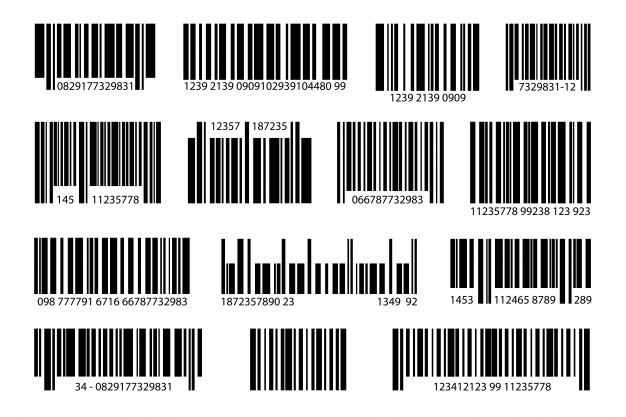A company’s stocks and sales should have their own identity, something that stands apart from the other products.
Both SKU AND UPC are two different types of ways that give identities to the product.
Understanding SKU and UPC
Stock keeping unit or SKU is a scannable barcode, that can be compared with an internal passport or ID card. They are most often seen printed on product labels in a retail store.
It is an internal identifier of a product, that is used to track products within a warehouse. Each product, product variant and a group of products should have its own unique SKU.
One of the most important features of SKUs is that they should be consistent and should be unique. While naming It, you should keep in mind to use easy abbreviations and contractions that describe the characteristics of the product.
Example:
Suppose you have an e-commerce store that sells only red and white shirts, and you are sure about not bringing in shirts of any other colours in the near future.
Hence, in this case, you can consider ‘R’ and “W” letters to identify the two colours
However, if you do sell the Red and White as well as Dark Red t-shirts in the near future, it could get jumbled up and might also become confusing.
The other most important point about SKUs is that they should be readable and seen easily to the human eye.
This reason is important because the warehouse can easily identify the meaning of the SKUs. The SKU’s name should begin with an identifier of a more general character and then gradually proceed with a more specific identifier. Separating the contractions only with the dashes, might not be readable by the inventory management software and cause a system error. It also needs to be kept in mind to avoid similar characters and numbers.
The other big feature of the SKU is that an SKU should be short: which means if the product has too many characters, it is not necessary to include all of them within a code. It is important to stick to the most important attributes, such as size and colour.
Most of the inventory management systems provide SKU generators as part of their functionality, that the SKUs can be generated automatically leading to saving time on inventing SKU names.
Now, the next part of the blog is about Universal Product Codes or UPC’s
If an SKU is an internal product identifier, a UPC is an external one.
The universal product code is a barcode symbology that is widely used across the world for tracking trade items in the stores and at the point of sale.
Moreover, it is a unified standard of barcoding that has first appeared in the United States and then spread to other countries.

There’s a process in finding out the UPC code:
Unlike SKU, a UPC is not something that can be created or generated.
Only a part of it can be created by adding a product number. The core of it is the company prefix, which can be a 6-10 digit number.
Understanding the difference between the SKU and UPC
SKU vs. UPC: What’s the Difference?
There are some differences that help to understand the difference between SKU and UPC.
1.Both SKU and UPC are unique identifiers of products. However, an SKU is used internally for inventory management purposes whereas a UPC is used externally for sales purposes.
2. A company can create or generate the entire SKU codes whereas a UPC can be generated only partially.
3. Both SKU and UPC uniquely identify each configuration of a product, such as colour and size.
4. An SKU encodes the product’s characteristics and does not contain a company prefix. On the contrary, the main part of a UPC is a company prefix, which should be applied via GS1 US or other authorized organizations.
Knowing the difference between SKU and UPC is important for inventory management
We can conclude that UPC and SKU codes are both equally important for any business. These unique identifiers streamline the sales and the inventory management process, making the data more accurate, making sure that the items are well-protected from any kind of theft, improving the quality of the service at the physical stores.
A dynamic inventory offers software, which can help in the process. ZapERP inventory management software is compatible with all types of barcode scanners, which makes sure its customers are having a user-friendly experience when generating or scanning the codes.
Dynamic Inventory offers powerful software that can help in this process. Our user-friendly software is compatible with all types of barcode scanners, so you will not have any problems when generating or scanning your codes.
ZapERP inventory management software so provides a wide range of services of inventory management software, as well as warehouse management.
We can conclude by understanding that SKU is an internal product code that helps in managing inventory. They are alphanumeric strings that can be encoded and can be created with the aid of reliable barcode generators. There is a huge difference between SKU AND UPC in many and knowing how to distinguish one from another saves time and other resources.
 Start using ZapInventory today
Start using ZapInventory today

